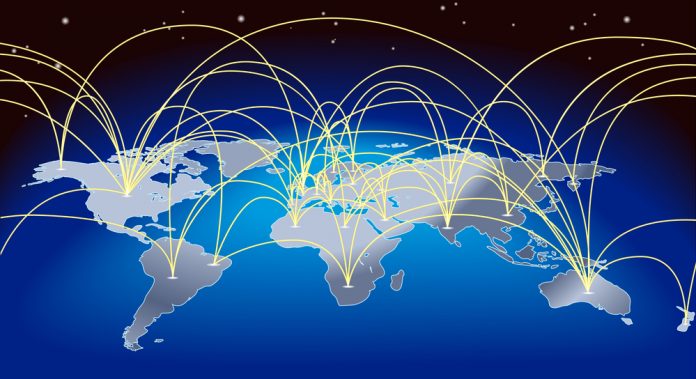The article is written by Naman Sherstra from the Department of Law, University of Calcutta. The distinction between the two global economic agendas is discussed in the article.
Table of Contents
Introduction
Since 1974, when the developing countries called for the idea of “trade liberalisation” for promoting economic growth and development, the concept of a multilateral trading system was developed. The aspect of this idea was to execute the international trade and the trade negotiations under the World Trade Organisation at the multilateral level and at the regional level as well. The realisation of free trade as the best policy by the global countries led to an economic system for the developed nations. The increase of Regional lntegration Arrangements (RIA) has raised several concerns among economists as the inherent trend of regionalism being contrary to the objectives of the multilateral trading system. This contradiction has created a threat that may lead regionalism to dominate over multilateralism.
The common trend of emerging trending blocs is a kind of discriminatory regional organisation having the role of providing a shield to the economic policy of member countries and protecting the domestic markets of such countries against the multilateral trading system established at Bretton Woods. The establishment of a regional centric trading system is a threat to the international framework of trade established by the GATT, WTO and ITO. This may lead to the replacement of the global trading system and promote trade blocking having competitive objectives with multilateralism. Such conditions may lead to international crises. The distinction shows how the impact of regionalism over the economic partners have whether encouraged or discouraged global free trade. The distinction shall also consider the social, economic, political, legal and cultural aspects of both economic agendas. The positive and negative aspects of both agendas are also depicted in the article.
Concept of Regionalism
Regionalism is a concept that came after the second world war as a global trending arena where the parties to a regional trade agreement offer more favourable trading treatments in the trade matter comparatively the rest of the world. In a political sense, it refers to the common sense of identity among the regions in the particular geographical area showing fraternity for the unique culture, language. Economic regionalism offers the free flow of goods and services and provides coordination between the nations in similar geographical regions. The principle of economic regionalism is contrary to the “Multi Favoured Nation System” principle of the WTO of treating every nation equal under the multilateral trading system. The examples of economic regionalism are free trade areas, custom unions, common markets. The rules of trades are regulated by the WTO and GATT principles who promote the multilateral trading system. When any member of the WTO enters into the regional trade arrangements among the geographical identity-based regions, such nations shall depart from the principle of non-discrimination as mentioned by the GATT in Article I and Article II of GATS. SAARC, NAFTA, ASEAN are the groups of nations that favour regionalism.
Political regionalism
The term regionalism is used in a different political typology also. The political term of the regionalism connotes is defined in the international relations as a group of nations characterised by similar lingual, historical, religious and cultural experiences working for their common aim. In a broader sense, it means that the formal and informal co-relations between the group of nations belong to common geographical existence. The term before world war 3 was used as separatism creating conflicts between the nations but after the rise of the 20th century, the different regions took their counter position as elements creating a civic society and more participative form of democracy.
Positive aspects of regionalism
There are certainly positive aspects of regionalism. These are as follows:
- The nations having larger geopolitical areas need a political boundary administered by municipal corporations. The metropolitan areas let the easier solution to any kind of problems in a specific region. The regional areas allow the exercise of governance and the development of the nations in a more effective way. In regional areas, the government is easily able to administer as well the equal distribution of the resources is done among the citizens. This approach is useful in citing the government’s shortcomings in growing metropolitan areas.
- Regional planning is one of the important factors to understand economic planning such as sanitation, water management, in a unit way and let the government address the problem in an easier way.
- Regionalism brings the feeling of brotherhood among the people of similar regions and lets them rise against discrimination for their development. The separation of Uttarakhand from UP, demand of Telangana state are some of the examples.
- The multitude in the public policy on the federal, state, regional and local level led to the development of the region and equal coordination of plans at all these levels in an effective way. The regionalisation helps the effective implementation of all the policies at a regional level.
- Regionalism has a positive impact over the competitive market economics as the fall in custom tariffs help in the flow of existing supply of goods.
- It also helps in prevailing domestic goods over foreign export goods. The strong presence of Chinese goods in India.
Negative aspects of regionalism
There are some negative aspects of regionalism. They are as-
- Regionalism is often seen as a threat to the unity and integrity of a nation as the insurgent regional groups look to the development of specific interests of particular region based people. Such idea hampers the political-administrative setup of the Nation
- Regionalism creates bitter relations in international diplomatic relations. The difference in political ideology between the federal and the state level government always creates tension between the interstate. The South Indian states were against Rajeev Gandhi when he was attending the Commonwealth hands meeting with SriLanka. This affected the relation between Srilanka and India. Similarly, recently the WB government showed disagreement on Teesta river water sharing with Bangladesh, where the central government agreed to share water with Bangladesh. Such a situation weakened the relation between India and Bangladesh.
- Sometimes, the vote bank politics of the political parties on the basis of language, culture, and identity play an undemocratic role in Indian politics. The anti-Bihari sentiments raised by MNS, a political party in Maharashtra for the Marathis shows how regionalism plays a region-centric privilege to own people discarding those ones from other regions. This creates tensions among the regions as after the anti-Bihari sentiment a lot of violence rose against the Marathis in Jamshedpur and other parts of Bihar and Jharkhand.
- Regionalism hampers the global free trade system and discourages the UN institutions like WTO and ITO who promote the Multilateral trading system across the world.
- The region-based common trading hampers the enthusiasm of the foreign investment companies who are interested to invest in a particular region.
- The cold war between the two most powerful nations USA and China has changed into the economic war by promoting the regional trading system and creating common tariffs in their own regions. China has put restrictions on several companies of the United States by giving a high hand to its own products.
Concept of Multilateralism
Multilateralism is a process of organizing relations offered as a membership by the International organisation, between the two ar more than two powers for the sake of trade liberalisation which started in the field of trade and goods when the General Agreement on Trade and Tariff was signed in 1947 by the U.S.A and other countries by eliminating the trade barriers and promoting the service and developed the scope of services, agriculture, public procurement with its successor- World Trade Organisation. The Uruguay round in November 1982 held between the ministerial members of GATT, brought a change in the biggest multilateral trade system in the world.
Positive aspects of multilateralism
There are several multiple aspects of multilateralism:-
- The International organisations like the United Nations and its institutions like WTO at the Uruguay round negotiations signed on the principle of “Single undertaking” which bound the members of WTO to reinforce the principle of Most Favourable Nations.
- The Multilateral Trading system enforced the system of global trading which gave rise to foreign companies for the establishment and circulation of goods in different nations.
- The principle of multilateralism supports the global challenge and the Institutions come ahead to combat such challenges.
- The history of multilateralism spreads the ideology of “peace” across the world.
Negative aspects of multilateralism
- Multilateralism puts restrictions over undeveloped countries where the developed nations start investing in the market of such nations which further does not let the regional companies develop.
- The non-cooperation of the nations due to the aggressive trade approach of the United States has made the nations go with Regional Trade Arrangements against the indiscriminate principle of WTO.
Key points of distinction
Market Competition
The unsteady approach of the GATT towards the liberal trading system has increased the number of Regional Trading Arrangements in the arena of multilateral trading systems. In order to understand this complication, we need to analyse the consequence of choosing the Multilateral Trading System over the regional trading arrangements. The liberalised trading regime of the RTA members has increased the competition of trade between the member countries. If such nations shall opt for regional trading at the multilateral level this will make their domestic markets more competitive as the RTA members have to give their markets to the non-member nations. In return, the non-members shall offer them the expansion of their own markets. The RTA is enabling the regional nations to achieve the liberalisation at the regional level.
Liberalisation of trade at the local level
The multilateral approach towards the liberalization through the negotiations shall include a number of countries and in the similar time frame, the regional trading approach would have let the nations to approach a higher degree to liberalisation at the same time frame. Hence, most of the countries go with regional trade arrangements rather than the multilateral trading system.
Multilateralism; a threat to de-industrialisation
The countries that show interests in the multilateral trading regimes have certain domestic compulsions as well as competitive reasons that force them to focus over regional trade regimes. There is a threat of de-industrialisation of the nations jumping directly into the trading regime at the multilateral level. So, the countries try to focus on their domestic regional markets rather than multilateral trading systems. The RTAs provide the nations to check their pace in domestic markets which provide them economic consistency. Hence, they try to start trade liberalisation at the regional level first.
Discriminatory policy of WTO offering favours to RTA
The World Trade Organisation is the successor of the General Agreement on Trade and Tariffs (GATT) who promotes trade liberalisation at the multilateral level by entering into the agreement which provides the provision of equal treatment with every nation as under the Most Favoured Nation (MFN) Treatment. The MFN nations are the nations restricting the other nations who discriminate among other members. However, there are exceptional provisions under the MFN treatment which allows the WTO members to undergo RTA regime, despite discrimination of Article 1 of the GATT. The main discrimination lies when the non-RTA members are prohibited to enter in the region of the RTA regime. The RTA members increase the competition in the market by creating trade unions, imposing custom tariffs for their preferred regional members.
Trade distribution mechanism
The trade distribution mechanism followed by the father of liberal trade organisations like GATT and WTO provides non-members more preference over the members setting up an own regional trade regime henceforth hampering the motive of global trading liberalisation set up by WTO. So, the exception rule allowed the members to opt for RTAs under the MFN treatment despite the discrimination of the article is itself a discriminatory trade distribution mechanism created by the WTO.
Decreased tariffs
The decreased tariffs for the RTAs member countries help them to enjoy dominance over the local market in comparison to the non-RTA members. This also reduces their competition in the local markets. On the other hand they RA members get a benefit over the non-members. This discrimination provides special treatment of providing their own market privilege to the nations who violate and discriminate the global open trade system. Hence, such a mechanism of trade diversion created by the multilateral institutions creates a wave against multilateralism.
Custom Unions
The Custom unions are the free trade areas (FTAs) permitted under article XXIV of GATT 1994 for the RTA members. The system of Custom unions provides a free market area to the RTA members for the harmonisation of their trade markets debarring the non-RTA members from entering their regions. The advantage of entrance in the market is only provided to the low barrier nations who can enjoy the dominance over the local market by entering in the RTAs.
Major regional trading arrangements
NAFTA
The North American Free Trade Agreement is a treaty signed by the United States of America, Mexico and Canada in 1994. NAFTA is said to be the largest Free Trade Market in the world. However, it became a full-fledged RTA in the year 2005. In 2008 it removed non-tariff barriers which eased off the US trucks to enter Mexico.
ASEAN
The Association of South Asian Nations is a regional intergovernmental organisation established with five countries namely Thailand, Singapore, Philippines, Malaysia and Indonesia in the year 1967. The motto of the establishment of ASEAN was to promote economic growth, cultural development among all the member nations in the SOUTH ASIAN continent. The Proposed Free Trade Area program was launched during The Third ASEAN Summit held in 1987 at Manila. The tariff benefit proposal was provided after the summit to the original member nations.
EU
The European Union is one of the largest Regional Trade Agreements among 27 member nations for their political and economic benefits. The EU has crossed the stage of Free Trade Areas and now started harmonisation of their fiscal and monetary policies. It was established during the Maastricht Treaty in the year 1993.
Conclusion
The economic competition among the nations has led the tendency of liberalisation of trade at the regional level. A data served by WHO shows till date 1st June 2020, there are 303 regional trade agreements in force. The various factors have compelled the multilateral trading systems to weaken down. The discriminating policy of the WTO favouring the non-RTA nations has put the global trading regime into the grave. The Cold war between the economic powers the USA and China has triggered the economic war among the world. Amidst all these, the European free trade system had broken the barrier of globalisation of trade. Despite the UN strives to put the world in the discrimination-free global trading system, the competitive markets and the trade war due to difference in ideologies of the Nation spill water on the motive of WTO. During the Covid19, the world experienced how China betrayed its neighbours by offering the faulty PPE kits. The Mask exchange with Huawei 5G technology offered by China to France shows the self concentrated market competition. However, the WTO needs to change its policies and come with new strategies so that the economic competition in the markets could be reduced. This would surely take the Multilateral Trading Regime towards a paradigm shift.
References
- https://shodhganga.inflibnet.ac.in/bitstream/10603/18850/9/09_chapter%205.pdf
- https://www.britannica.com/topic/multilateralism
LawSikho has created a telegram group for exchanging legal knowledge, referrals and various opportunities. You can click on this link and join:
 Serato DJ Crack 2025Serato DJ PRO Crack
Serato DJ Crack 2025Serato DJ PRO Crack











 Allow notifications
Allow notifications



